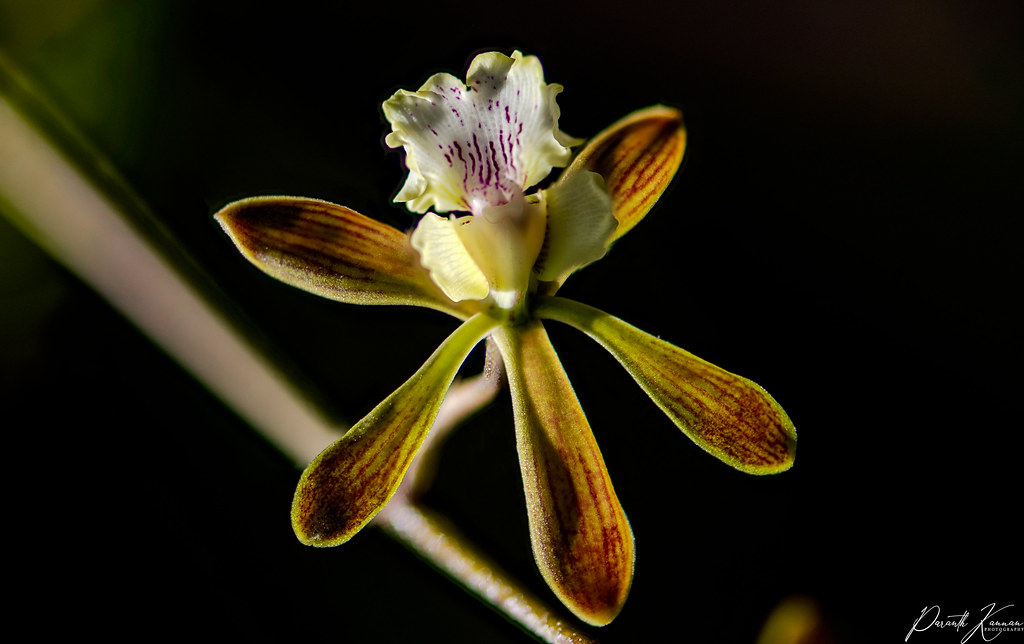#tipularia discolor
Text
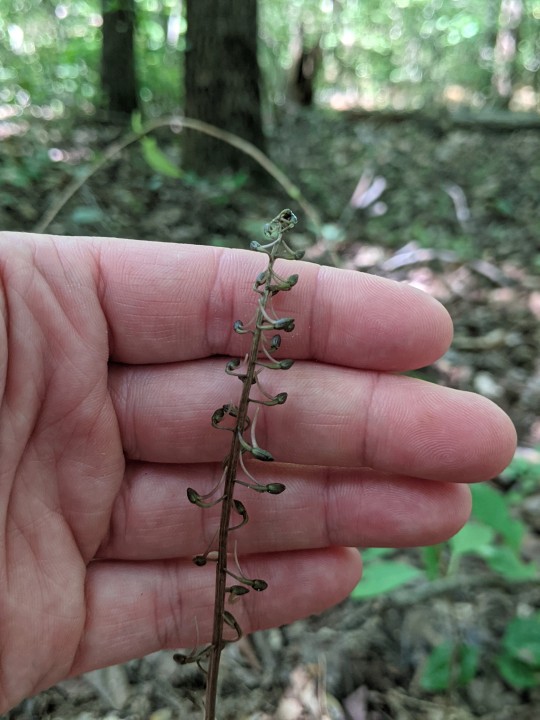


Tipularia discolor - Cranefly orchid
Yesss, native orchid blooming time! I love these, and they're not easy to spot. They're spikes of small flowers, brown against the leaf litter, and they don't even have leaves in summer. But they're so special.
#tipularia#tipularia discolor#native plants#native orchids#forest floor#cranefly orchid#plant friends
13 notes
·
View notes
Photo

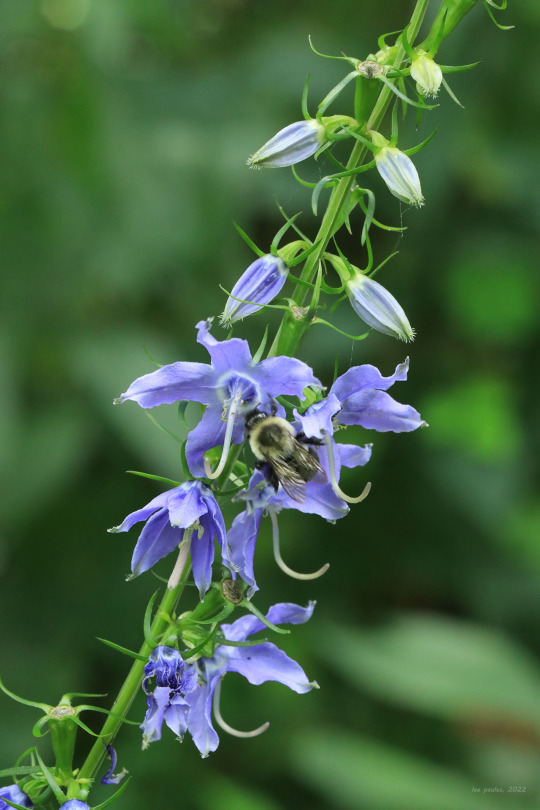
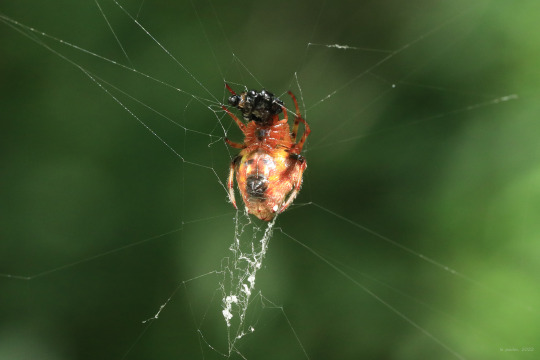

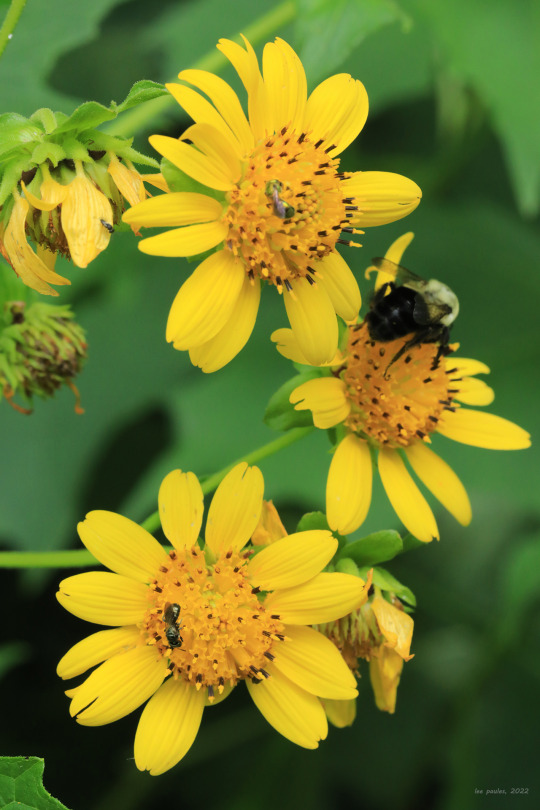

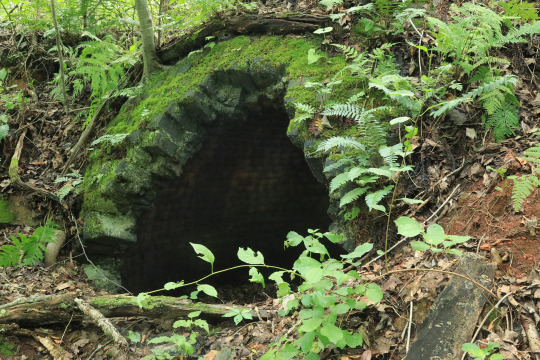

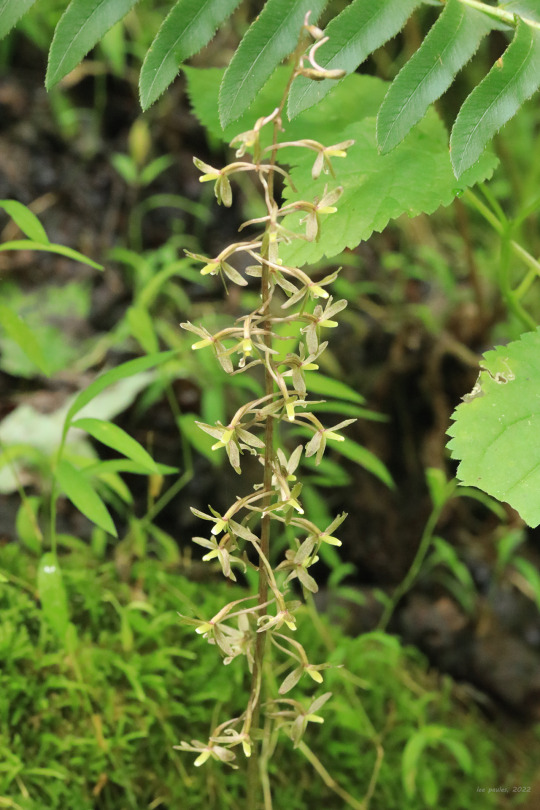
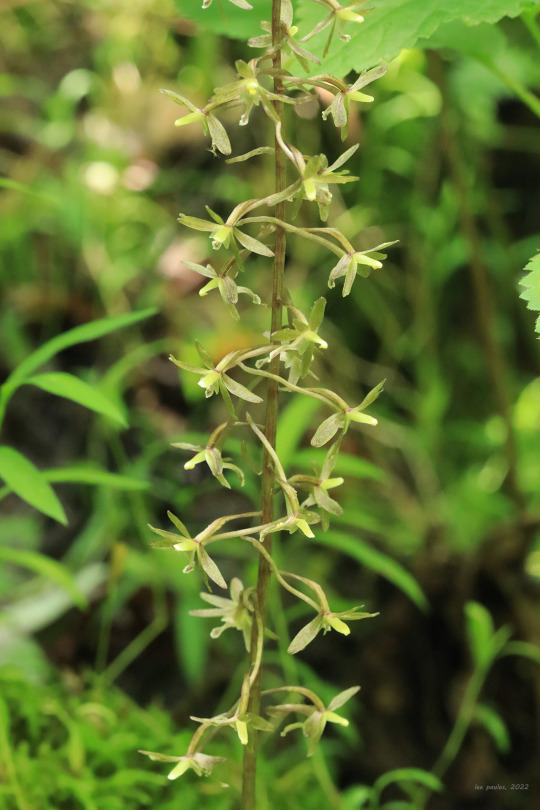
Above are a few photos from a long, mid-summer bike ride on the Mon River Trail yesterday. My destination was the historic beehive coke ovens at mile marker 22, where one of the most elusive and delicate of Appalachia’s terrestrial orchids, cranefly orchid (Tipularia discolor), blooms this time of year. This colonizing perennial has one of the most fascinating life-cycles in the plant kingdom. Hairy leafcup (Smallanthus uvedalia), also known as bear’s foot due to its enormous, lobed leaves, is another great summer wildflower. This perennial’s massive blooms arguably draw even more pollinators than those of milkweed.
From top: American bellflower (Campanula americana), a tall, graceful lover of shady woodland edges; an arrowhead orb weaver (Verrucosa arenata), enjoying an early brunch from her delicately-spun web; an eastern tiger swallowtail (Papilio glaucus) taking a sip of sweet nectar from hairy leafcup; the bright yellow flowerheads of hairy leafcup, which draw a steady stream of pollinators; historic beehive coke ovens, crucial to fueling the iron and steel industry in the late nineteenth century; and the delicate, drooping flowers of cranefly orchid, also known as crippled cranefly orchid.
#appalachia#vandalia#west virginia#summer#wildflowers#flora#orchidaceae#beehive coke oven#industrial history#human history#mon river trail#tipularia discolor#cranefly orchid#crippled cranefly orchid#smallanthus uvedalia#hairy leafcup#bear's foot#campanula americana#american bellflower#verrucosa arenata#arrowhead orb weaver#eastern tiger swallowtail#papilio glaucus
41 notes
·
View notes
Text
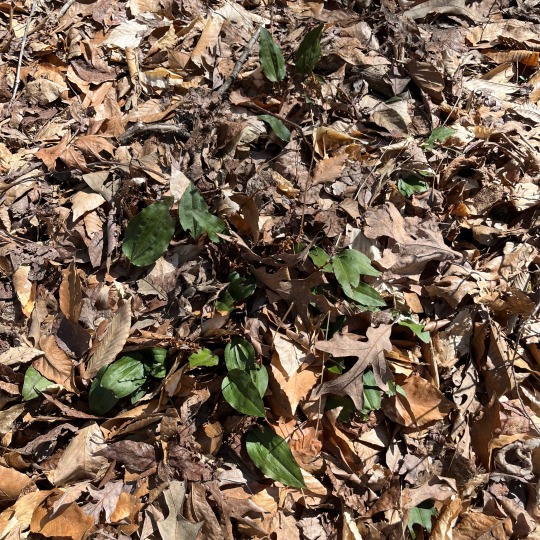


Tipularia discolor, Orchidaceae.
Crane fly orchid is the only member of its genus native to North America, and the first orchid I’ve encountered in habitat out east. Right now undergrowth is pretty much limited to this, some trillium species, bloodroot, and a heaping portion of little brown jug, which I’ll feature soon.
Although this won’t flower until summer — the moths that pollinate it are still mostly overwintering as larvae — its above-ground leaves are already collecting energy for the big event. Green and splotchy above; shiny purple below, and very obvious in these big rhizomal clusters. A few dead flower spikes are still hanging around, but they’re hard to parse.
I did try, but it didn’t go very well. For one thing, the light’s bad. For another, I nearly got whacked by the little fella hanging out in the lower right corner of the first picture. It was cold enough it declined to move on my account, but I’m embarrassed by the close call — a copperhead bite sounds neither fun nor especially affordable, especially given it’d have been my hand. Worth another sweep next time I’m out here, perhaps.

59 notes
·
View notes
Text

Tipularia discolor / Crane Fly Orchid at the North Carolina Botanical Gardens at the University of North Carolina at Chapel Hill in Chapel Hill, NC
#Tipularia discolor#Tipularia#orchidaceae#Crane Fly Orchid#Orchid#Native plants#Nature photography#Foliage#photographers on tumblr#North Carolina Botanical Gardens#NCBG#UNC#UNC-Chapel Hill#Carolina#Chapel hill#Chapel hill NC#North Carolina
1 note
·
View note
Text
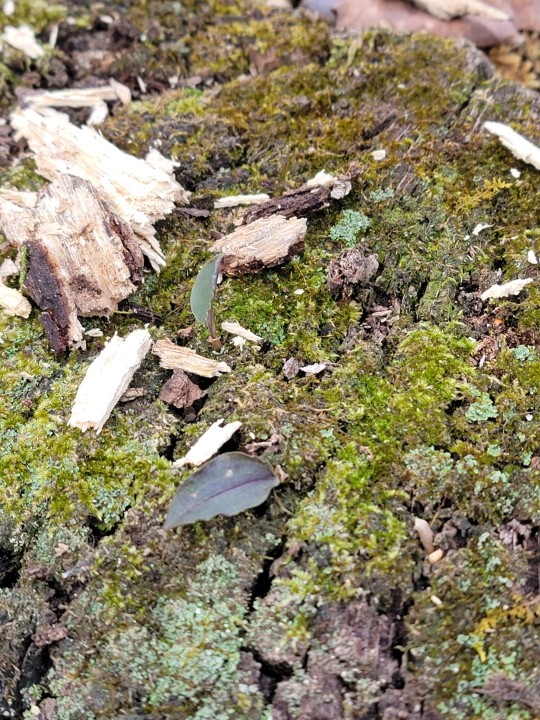
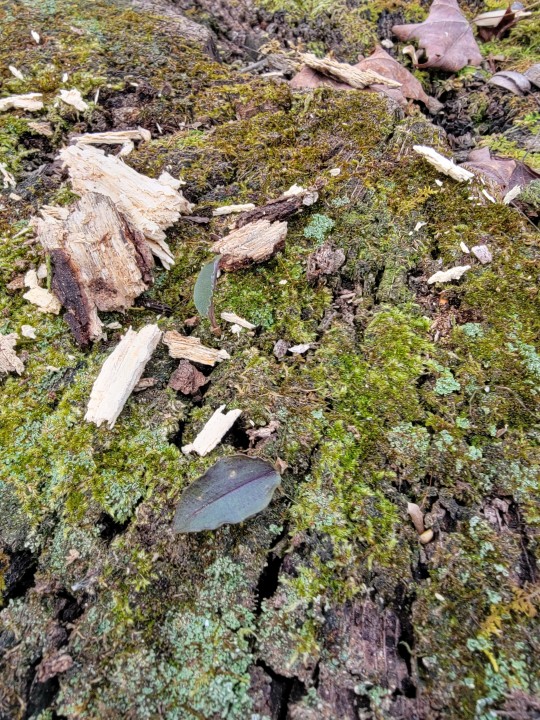

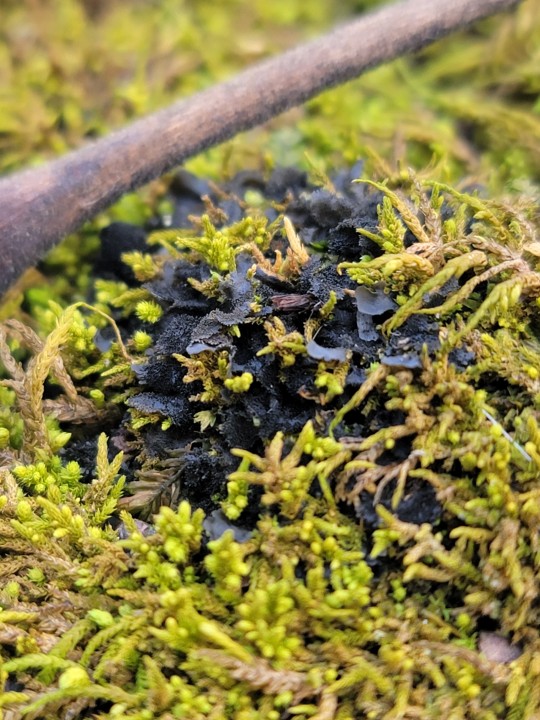

Ok so im gonna bring this up since i thought it was there to add a cool fact and or refresher habitat point. Tipularia discolor is associated with well decayed wood specifically with a late stage white rot inorder for protocorm developememt to start. (Buzzardroost, adams co, edge of ap, tnc, Ohio)
Ok, more jelly lichen! ^
Another species with a look a like or 3. Good thing this family is ok for the vast majority.
Though, some are even different genus. First off I dont think that this looks like a tattered moss eating jelly or leptogium or scytinium but its worth mentioning them since a few sources do. As for Collema, this in theory should be Collema flaccidum, only isidiate with smooth lobed thallus seems right. Ive seen Collema subflaccidum on trees and it is not super common imo in the upper ilp but its the most common Collema in the smokies, known for arboreal habits and is smooth and lacks isidia, often called smooth folded jellyskin lichen.
Below are two ilp examples, one C. subflaccidum from sandstone at rrg from creation falls area, the other is from wilderness trail in adams county.
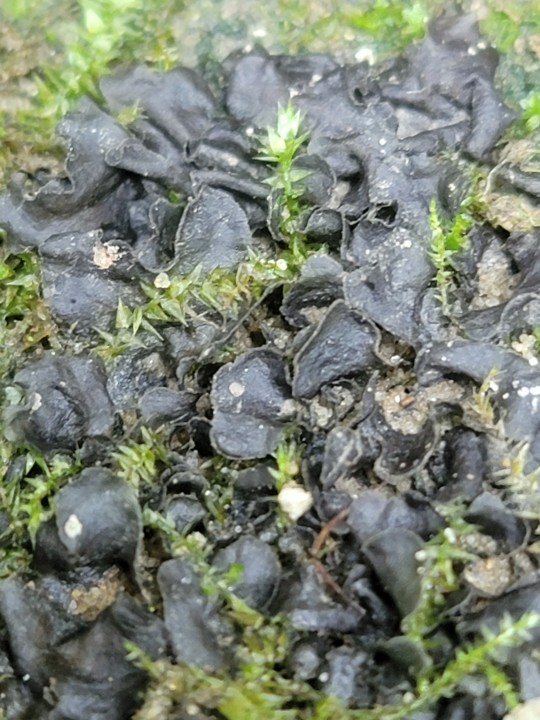


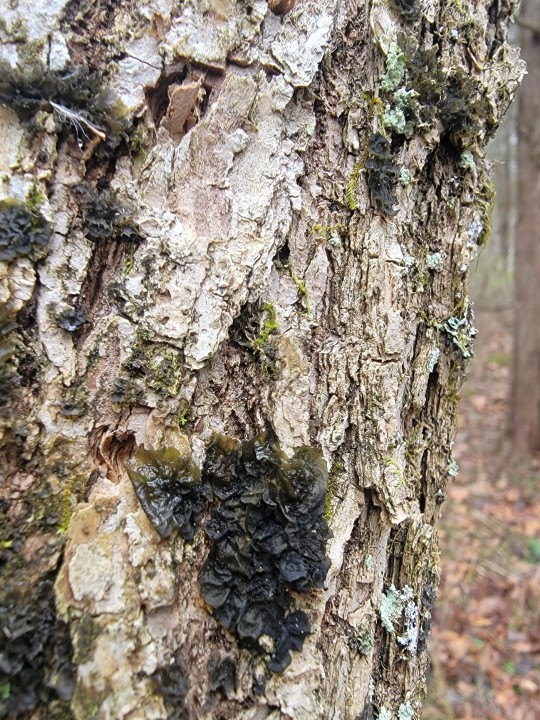

The other lichens look too pelt like and intricate in my opinion but are also mentioned ( Collema pulcellum var. Leucopepum (apothecia be bumpy and pruinose with cool undulate grooves that look like it should be isidiate but isnt and has a large mostly appressed thallus with smooth patches) and C. furfuraceum (literally the same look but has isidiate bumpy ridges and has long conspicuous ridges intead of those dot like bumps.))
Bottom two are isidiate so Collema flaccidum and are saturated so give off more of the textbook look visually.
1 note
·
View note
Photo

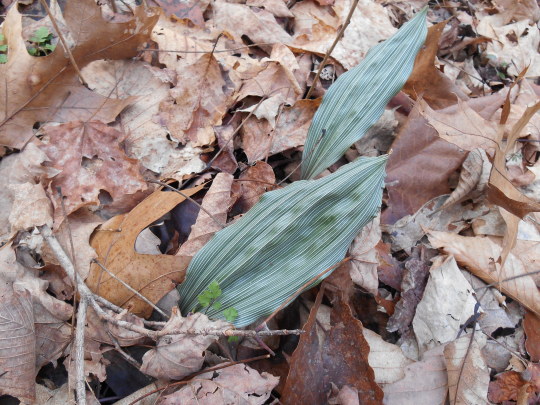
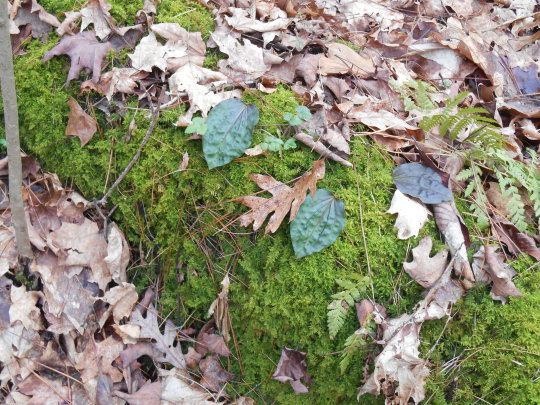


Winter greenery appreciation pt 1: orchids! Rattlesnake plantain (evergreen), puttyroot (leaves summer-dormant), cranefly orchid (leaves summer-dormant)
26 notes
·
View notes
Photo


more from stone mtn state park
#photo#need to id#maybe tipularia discolor in diphasiastrum digitatum#i don't know fungus even a little bit#correct me on ids
88 notes
·
View notes
Photo

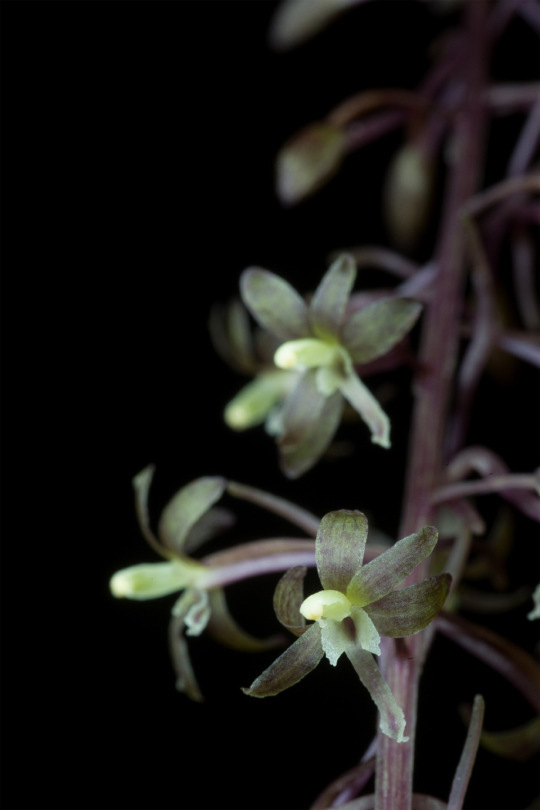


Tipularia discolor, the Cranefly Orchid, is a terrestrial plant found mostly through the southeastern United States. After dormancy and prior to flowering, the plant's growth consists of a single leaf, green on top and vividly purple on the bottom. The leaf senesces in spring, followed by a summer bloom on which exhibit atypical symmetry. The flowers are off-kilter to one side which allows the flower to deposit its pollinia on the left or right eye of its favored pollinator - a type of moth.
124 notes
·
View notes
Video
Crane-fly Orchid by Paranth Kannan
Via Flickr:
The Crane-fly Orchid (Tipularia discolor), or crippled crane-fly, is a perennial terrestrial woodland orchid, a member of the Orchidaceae. It is the only species of the genus Tipularia found in North America. It is found scattered throughout the Southeastern United States.
2 notes
·
View notes
Photo
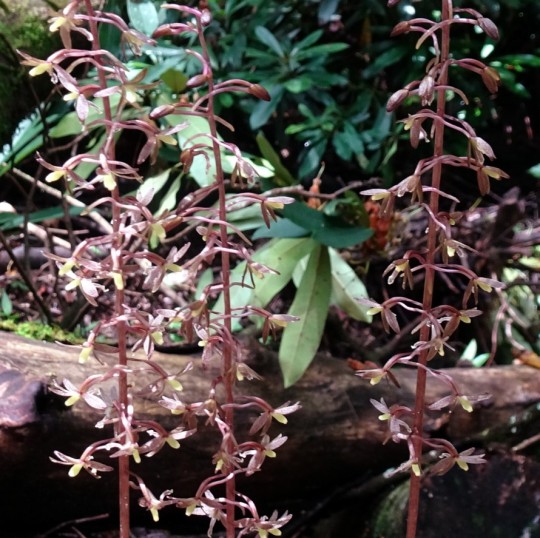
20200729 Stone Mountain State Park North Carolina
Crain-Fly Orchids Tipularia discolor
1 note
·
View note
Text
Etsy listing available in my shop
Check out this item in my Etsy shop https://www.etsy.com/listing/877281210/tipularia-discolor-or-crane-fly-orchid
0 notes
Text

Cranefly orchid seed pods
#wildflowers#native plants#crippled cranefly#tipularia discolor#tipularia#forest floor#orchid#seed pods
1 note
·
View note
Text
Orchids in Fall


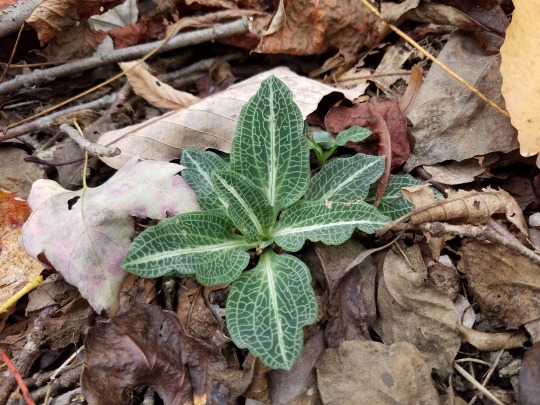
You might not think of orchids as temperate or fall/winter plants, but here in Virginia it’s a great time to look for orchid leaves right now in November!
Three species are pictured here - the cranefly orchid, Tipularia discolor, at top, and the putty root orchid, Aplectrum hyemale in the middle. They’re easily distinguished by the tiny pinstripe white veins on the putty root orchid and the more solid green with well-spaced purple veins on the cranefly orchid. The leaves of these orchids die back when they begin to bloom in spring (putty root orchid) or late summer (cranefly orchid) and regrow in the fall. The flowers are small and occur on a single, leafless stalk.
At the bottom is the distinctive rattlesnake plantain orchid, Goodyera pubescens. This plant gets small white flowers on a single stalk when it blooms in summer. Unlike the other two orchids pictured here, the leaves don’t ever die back.
#botany#puttyroot orchid#putty root orchid#cranefly orchid#orchids#virginia wildflowers#post by el#rattlesnake plantain orchid#goodyera pubescens
48 notes
·
View notes
Photo

29 January 2017. 2/2. I saw these at McDowell State Park in Charlotte, NC. The magic of Tipularia discolor!
#naturalhistory #overlooked #tipulariadiscolor #orchid #native
2 notes
·
View notes
Photo


Tipularia discolor
crippled cranefly orchid
August 2020, Highland co.
9 notes
·
View notes
